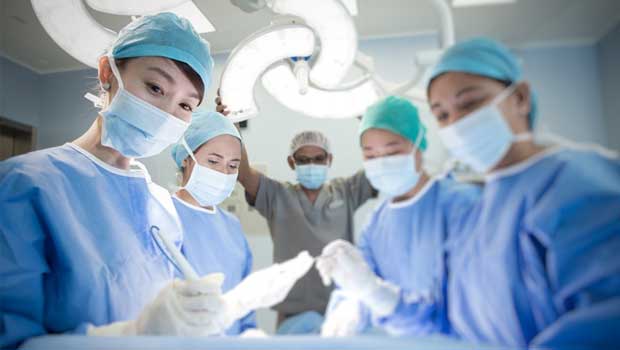
The landscape of breast care in Singapore is changing for the better. More widespread breast screenings leading to early detection and modern oncological breast care has made it possible for aesthetics and quality of life to be considered too during treatment, alongside the crucial medical and life-saving aspects.
As one of the SingHealth Duke-NUS Disease Centres (SDDCs), the SingHealth Duke-NUS Breast Centre adopts a strategic model of care for patients with specific conditions that require multi-disciplinary teamwork, streamlining the patient journey by reducing the number of hospital visits. This model of integrated care is further enhanced through targeted research and education collaborations.
Tomorrow’s Medicine speaks to two medical practitioners from the SingHealth Duke-NUS Breast Centre, to find out more about the latest in breast care and cancer in Singapore.
Get updates on Tomorrow's Medicine in your mailbox!
Click here to subscribe
The SingHealth Duke-NUS Breast Centre: What is it?
The SingHealth Duke-NUS Breast Centre is Singapore’s largest integrated breast centre, providing state-of-the-art treatment and care to women for a full spectrum of breast conditions, from benign ailments to cancer of all stages. Annually, the Centre sees about 70,000 outpatient visits and manages about 1,300 breast cancer patients, out of a total of approximately 2,000 breast cancer patients diagnosed each year in Singapore.
The Breast Centre serves its patients at five SingHealth institutions: National Cancer Centre Singapore, Singapore General Hospital, Changi General Hospital, Sengkang General Hospital and KK Women’s and Children’s Hospital.
Assistant Professor Sabrina Ngaserin, Head of Breast Surgery and a Consultant in the Department of Surgery at Sengkang General Hospital (SKH) is the Breast Centre’s Service Chief for SKH, and she is particularly invested in cutting-edge breast cancer surgical techniques in treating her patients.
These modern surgical techniques that are less invasive and more targeted include oncoplastic breast conserving surgery as opposed to mastectomy; the “aesthetically scarless” minimally invasive breast surgery as opposed to traditional breast surgery; sentinel node biopsy as opposed to more radical axillary dissections; and intraoperative radiotherapy as opposed to prolonged standard radiation; among others.
Said Asst Prof Sabrina about her work at the Breast Centre, “Breast surgery is a specialisation that is close to my heart. At our Breast Centre, I work with a multi-disciplinary team of doctors, nurses and allied health professionals to provide a one-stop shop for breast care. Although cancer therapy can be rather technical and subspecialised, my overall goal is to deliver quality care with a heart.”
Advancements in breast care in Singapore
With advancements in technology and earlier detection of breast cancer, the options for breast care today are more diverse than ever.
Gone are the days where breast cancer patients were faced with the only options of disfiguring full breast removals or full axillary dissections - which removes several lymph nodes under the arm pre-emptively - without care for reconstruction or their overall quality of life.
“Surgeons can now offer increasing complexities of oncoplastic and minimally invasive breast procedures that seek to resect with precision and conserve the breast and nipple whenever possible, to minimise the need for axillary dissection and its complications when only sampling may be required. This prioritises our patients’ physical restoration, which in turn improves their mental well-being and overall quality of life,” Asst Prof Sabrina explained.
She added, “Whenever a cancer survivor says that she can even forget that her “aesthetically scarless” endoscopically resected and reconstructed breast isn’t real, I feel truly proud. We are helping these ladies move past the experience of being a breast cancer patient, so they can move on with their lives.”
Another concept that is currently being advocated in Singapore is targeted axillary dissection for advanced-stage breast cancer patients.
Dr Julie Liana binte Hamzah, a Consultant with the Breast Centre; Breast Surgery in Singapore General Hospital; and Division of Surgery and Surgical Oncology in the National Cancer Centre Singapore, is one of the doctors on the team leading the trial.
She elaborated more on its significance: “The technique involves putting a clip into the lymph nodes that are known to have cancer. Following a course of neoadjuvant chemotherapy, the nodes are studied for their responses to the treatment, and we only specifically remove the nodes that have evidence of cancer.”
“Most importantly, for patients, this technique will help reduce their chances of developing mobility-prohibiting lymphedema, a painful condition which is triggered when the lymphatic system is damaged and swollen after surgery,” Dr Julie said.
Another novel idea that Dr Julie spearheaded in the Breast Centre is the establishment of a clinical pathway for the identification and treatment of patients with lymphoedema post axillary dissection as part of breast cancer surgery.
“With this referral criteria, we can better manage our patients who develop lymphoedema with the help of interdisciplinary specialists like plastic surgeons and therapists.”
Breast cancer as a personalised journey
Through it all, one thing remains unchanging: every woman’s breast cancer experience is different. Thankfully, the treatments and care offered by the Breast Centre acknowledges each patient’s unique journey and offers them personalised care, according to their needs.
Looking back, Asst Prof Sabrina expressed pride in how far breast care has come over the years. “I find meaning in keeping entire families of women safe against the backdrop of breast disease: through their experiences with hereditary gene mutations; by counselling elderly ladies who wrongly perceive they are ‘too old’ to be treated; guiding young women who are trying to find their place in the world, and encouraging pregnant women fearing for their unborn child’s life,” she said.
“Breast cancer is a personalised journey of survivorship. Ultimately, we treat our patients, not just to cure them of cancer, but so that they can live their best lives.”
Get updates on Tomorrow's Medicine in your mailbox!
Click here to subscribe













 Get it on Google Play
Get it on Google Play